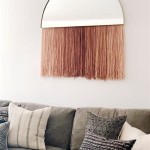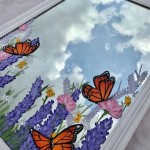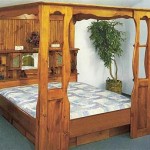Silver Mirror Paint For Glass: An In-Depth Look
Silver mirror paint for glass represents a specialized coating designed to transform ordinary glass surfaces into highly reflective mirrors. This process, typically involving a chemical deposition method, requires precision and a thorough understanding of the materials involved. The resulting mirrored surface boasts high reflectivity, durability, and aesthetic appeal, making it suitable for a wide range of applications, from decorative items to functional components in scientific instruments.
The formulation of silver mirror paint is complex, involving several key components working in concert to achieve the desired effect. Silver nitrate, a metallic salt, serves as the primary source of silver, the reflective agent. Reducing agents, such as glucose or formaldehyde, are used to precipitate the silver ions from the solution, depositing them onto the glass substrate in a thin, uniform layer. Stabilizers, like ammonia or tartaric acid, are included to control the reaction rate and prevent premature precipitation, ensuring a smooth and even coating. Sensitizers, often stannous chloride, prepare the glass surface to better accept the silver layer, promoting adhesion and preventing imperfections. Finally, protective coatings, such as copper plating or specialized paints, are applied to the silver layer to shield it from oxidation, scratching, and other forms of environmental degradation.
The application process is just as critical as the paint formulation. The glass surface must be meticulously cleaned and degreased to remove any contaminants that could interfere with the silver deposition. This often involves using specialized cleaning solutions and rigorous rinsing protocols. The glass is then sensitized using a stannous chloride solution, followed by the sequential application of the silver nitrate solution and the reducing agent. The solutions are typically sprayed or poured onto the glass surface, allowing the chemical reaction to occur and the silver to precipitate out. Once the silver layer is sufficiently thick, the glass is rinsed thoroughly and allowed to dry. The protective coating is then applied, often through electroplating or painting, to enhance the mirror's durability and longevity.
Different application methods exist, each with its own advantages and limitations. Spray application is commonly used for large surfaces, providing a uniform and consistent coating. However, it requires specialized equipment and careful control of spraying parameters to avoid imperfections. Pouring application is suitable for smaller surfaces and allows for greater control over the coating thickness. However, it can be more prone to unevenness and requires careful handling to avoid spills and contamination. Immersion application involves submerging the glass into a solution containing the silvering agents. This method offers excellent uniformity but is limited to smaller pieces of glass and requires a large volume of solution.
Key Point 1: The Chemistry Behind Silver Mirror Paint
The chemical reactions underpinning silver mirror paint are based on redox (reduction-oxidation) principles. Silver nitrate (AgNO₃) in solution contains silver ions (Ag⁺), which are reduced to metallic silver (Ag) by a reducing agent. The reducing agent donates electrons to the silver ions, causing them to precipitate out of the solution and deposit onto the glass surface as a thin, reflective layer. The specific reducing agent used influences the reaction rate, the size of the silver particles, and the overall quality of the mirror. For instance, formaldehyde provides a rapid reduction reaction, resulting in smaller silver particles and a highly reflective surface. Glucose, on the other hand, offers a slower and more controlled reduction, leading to larger particles and potentially a more durable coating.
The role of stabilizers is to prevent the uncontrolled aggregation of silver particles. Without stabilizers, the silver ions would quickly react with the reducing agent, forming large, uneven clumps of silver that would not adhere properly to the glass. Stabilizers, such as ammonia, complex with the silver ions, slowing down the reaction rate and promoting the formation of smaller, more uniform particles. Ammonia also helps to maintain the pH of the solution, which is crucial for optimal silver deposition.
Sensitization is a critical step in the process, as it prepares the glass surface to accept the silver layer. Stannous chloride (SnCl₂) is commonly used as a sensitizer. It reacts with the glass surface, creating a thin layer of tin ions (Sn²⁺) that act as nucleation sites for the silver particles. These nucleation sites provide a favorable surface for the silver to deposit onto, ensuring a strong and uniform adhesion. Without sensitization, the silver layer would likely peel off or flake easily.
The formulation of silver mirror paint is a delicate balance of these chemical components, and even slight variations in the concentrations or the order of addition can significantly affect the outcome. Therefore, meticulous control and adherence to established protocols are essential for achieving high-quality mirrors.
Key Point 2: Applications of Silver Mirror Paint on Glass
The applications of silver mirror paint on glass are diverse and span numerous industries. Traditionally, it is used for manufacturing standard mirrors for bathrooms, dressing rooms, and other areas where reflection is desired. The reflective properties of the silver layer provide a clear and accurate image, making it an ideal material for these applications.
In the automotive industry, silver mirror paint is used to create rearview mirrors and side mirrors. These mirrors are crucial for driver safety, providing visibility of the surrounding environment. The durability of the silver layer is essential in these applications, as the mirrors are exposed to harsh weather conditions and potential impacts.
Decorative arts and crafts also heavily rely on silver mirror paint to create artistic pieces, ornaments, and decorative panels. The reflective surface adds depth and visual interest to these creations, enhancing their aesthetic appeal. Artists and crafters often experiment with different techniques and finishes to achieve unique and customized effects.
Scientific instruments and medical devices utilize silver-mirrored glass for specific optical purposes. Telescopes, microscopes, and other optical instruments require highly reflective surfaces to direct and focus light. The precision and uniformity of the silver layer are critical in these applications, as any imperfections can distort the image and compromise the accuracy of the instrument. Medical devices, such as endoscopes, also use silver-mirrored glass to provide internal imaging capabilities.
Furthermore, architectural applications include using silver mirrored glass for decorative wall panels, creating a sense of spaciousness and enhancing the visual impact of interior spaces. This technique is frequently employed in commercial buildings, hotels, and high-end residential properties.
The versatility of silver mirror paint makes it a valuable material for a wide range of applications, contributing to both functional and aesthetic purposes across various industries.
Key Point 3: Environmental and Safety Considerations
The production and application of silver mirror paint involve handling several chemicals that pose environmental and safety risks. Silver nitrate, reducing agents like formaldehyde, and sensitizers such as stannous chloride can be hazardous to human health and the environment if not handled properly. Therefore, stringent safety protocols and environmental regulations must be adhered to during the manufacturing and application processes.
Formaldehyde, commonly used as a reducing agent, is a known carcinogen and can cause respiratory irritation. Exposure to formaldehyde vapor should be minimized through the use of ventilation systems and personal protective equipment, such as respirators and gloves. Alternative reducing agents, such as glucose or ascorbic acid (vitamin C), are being explored as safer alternatives, though they may require adjustments to the paint formulation and application process.
The wastewater generated during the silvering process contains silver ions and other chemical contaminants. These pollutants can have detrimental effects on aquatic ecosystems and human health if discharged untreated. Therefore, wastewater treatment is essential to remove silver and other contaminants before discharge. Treatment methods may include chemical precipitation, ion exchange, and reverse osmosis.
The disposal of waste materials, such as used chemicals and contaminated glass, must be carried out in accordance with environmental regulations. Silver waste can be recovered and recycled, reducing the demand for virgin silver and minimizing environmental impact. Specialized waste disposal facilities are equipped to handle hazardous materials and ensure their safe and responsible management.
Occupational safety is also paramount in silver mirror paint production and application. Workers should be provided with adequate training on chemical handling, safety procedures, and the use of personal protective equipment. Regular monitoring of air quality and worker health is essential to identify and address any potential hazards.
Research and development efforts are focused on developing more environmentally friendly and safer alternatives to traditional silver mirror paint formulations. These efforts include exploring new reducing agents, developing water-based formulations, and improving wastewater treatment technologies. The goal is to minimize the environmental footprint of silver mirror paint production and application while maintaining the desired performance characteristics.
Adhering to these environmental and safety considerations is crucial for ensuring the sustainable and responsible use of silver mirror paint technology.

Mirror Finish Paint Haydn

Rust Oleum Silver Mirror Effect Multi Surface Spray Paint 150ml Diy At B Q

How To Paint A Mirror Frame

Krylon Specialty High Gloss Silver Mirror Spray Paint Net Wt 6 Oz In The Department At Com

Transform Clear Glass Into Mirror Gold Silver Gloss Effect Spray Paint

Diy Mercury Glass Vases With Krylon Looking Spray Paint

Transform Clear Glass Into Mirror Gold Silver Gloss Effect Spray Paint

Making Faux Mercury Glass With Looking Mirror Paint Lansdowne Life

How To Diy Antiqued Mercury Mirror Glass 17 Apart

Rust Oleum Specialty 6 Oz Mirror Effect Spray Paint 301494 The Home Depot








